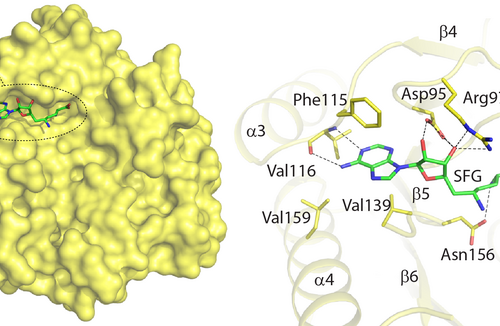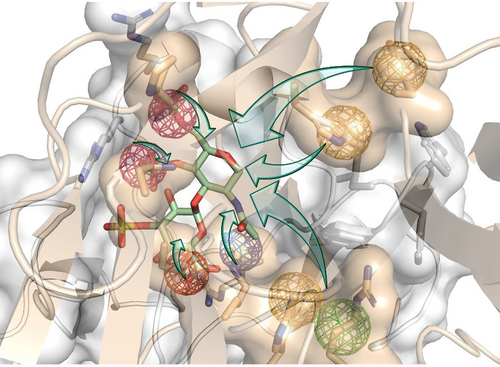Sponsored Content by Pittcon Apr 27 2023 Reviewed by Danielle Ellis, B.Sc. Insights from industry Dr. Chad Mirkin Director of the International Institute for NanotechnologyProfessor at Northwestern University In this interview conducted at Pittcon 2023 in Philadelphia, Pennsylvania, we spoke to Dr. Chad Mirkin, Director of the International Institute for Nanotechnology, about his work within...
Artificial nerve cells – almost like biological
Researchers at Linköping University (LiU) have created an artificial organic neuron that closely mimics the characteristics of biological nerve cells. This artificial neuron can stimulate natural nerves, making it a promising technology for various medical treatments in the future. Work to develop increasingly functional artificial nerve cells continues at the Laboratory for Organic Electronics, LOE. In 2022,...
Creating New and Better Drugs with Protein Crystal Growth Experiments
For more than two decades, the International Space Station has provided a platform for growing and studying protein crystals. In the early days of microgravity research, scientists discovered that the protein crystals grown in space were more uniform and larger than those grown in Earth’s gravity. Since then, drug companies and academic researchers have conducted hundreds of protein crystal...
Can Jack-Of-All-Trades AI Reshape Medicine?
Researchers chart course for the design, testing, and implementation of next-gen AI in medicine. The vast majority of AI models used in medicine today are “narrow specialists” trained to perform one or two tasks, such as scanning mammograms for signs of breast cancer or detecting lung disease on chest X-rays. But the everyday practice of medicine involves an...
Bold new therapy delivery method shows initial promise as treatment for Duchenne muscular dystrophy
CINCINNATI CHILDREN’S HOSPITAL MEDICAL CENTER IMAGE: RESEARCHERS SHOWED THAT SYSTEMIC DELIVERY OF MYMK+MYMG-LV-DYS RESULTED IN A SIGNIFICANT LEVEL OF DYS+ MYOFIBERS. IMPORTANTLY, THE TEAM DID NOT DETECT EVIDENCE OF VIRAL TRANSDUCTION IN NON-SKELETAL MUSCLE TISSUES INCLUDING HEART, KIDNEY, LIVER, AND SPLEEN. DYSTROPHIC MICE EXHIBITED HEALTHIER MUSCLES (REDUCTIONS IN MUSCLES CELLS WHERE A DYE WAS ABLE...
Scientists from IOCB Prague move closer to developing a drug not only against monkeypox
INSTITUTE OF ORGANIC CHEMISTRY AND BIOCHEMISTRY OF THE CZECH ACADEMY OF SCIENCES (IOCB PRAGUE) IMAGE: SINEFUNGIN AND SAH RECOGNITION BY THE MONKEYPOX VIRUS VP39 METHYLTRANSFERASE CREDIT: JAN SILHAN ET AL / IOCB PRAGUE Scientists from the Institute of Organic Chemistry and Biochemistry in Prague have deciphered the structure of the protein methyltransferase from the monkeypox...
A sweet solution to a cracking problem: Scientists design new bio-inspired molecules to promote bone regeneration
TECHNISCHE UNIVERSITÄT DRESDEN IMAGE: AN ARTISTIC DEPICTION OF COMPUTER-AIDED STRUCTURE-BASED RATIONAL DESIGN. THE GREEN ARROWS SYMBOLIZE THE INNOVATIVE STRATEGY TO INTRODUCE NEW CHEMICAL PROPERTIES IN THE HYALURONIC ACID MOLECULE (GREEN AND RED STICKS) TO DEVELOP RATIONALLY ENGINEERED GAG (REGAG) MOLECULES THAT ACT AS HIJACKERS OF BONE REGENERATION BLOCKING PROTEINS. DICKKOPF-1, A PROTEIN BLOCKING BONE FORMATION,...
Study challenges long-held beliefs about the roles of short-term and long-term memories
by Kat J. McAlpine, Harvard John A. Paulson School of Engineering and Applied Sciences Credit: Pixabay/CC0 Public Domain Would it surprise you to learn that short-term motor memories that last less than a minute play a bigger role than long-term ones in relearning movements after you’ve forgotten them? If so, you’re not alone: the Harvard John...
New method improves accuracy of DNA sequencing 1,000-fold to detect rare genetic mutations
by Allessandra DiCorato, Broad Institute of MIT and Harvard A team of researchers at the Broad Institute of MIT and Harvard has developed a new approach to next-generation sequencing that detects genetic mutations within single molecules of DNA. The method, called Concatenating Original Duplex for Error Correction (CODEC), makes next-generation sequencing about 1,000 times more accurate and...
Gut microbiome fluctuates throughout the day and across seasons, finds study
by Digestive Disease Week Credit: Pixabay/CC0 Public Domain The balance of microbes in the human gut varies substantially from morning to night and even more by season—with profound fluctuations completely transforming the microbiome from summer to winter, according to a study to be presented at Digestive Disease Week (DDW) 2023. The microbiome—bacteria that live in...





